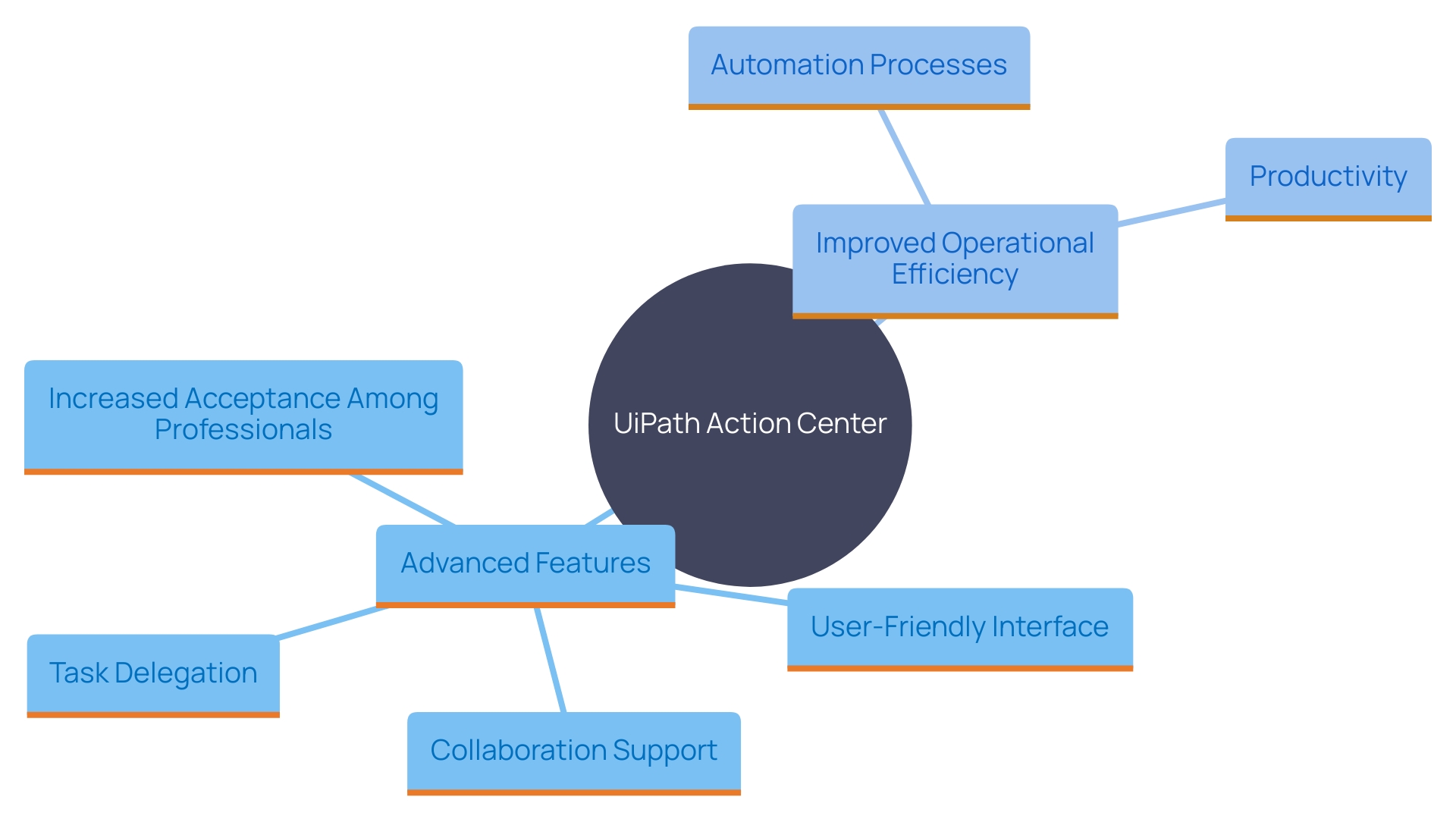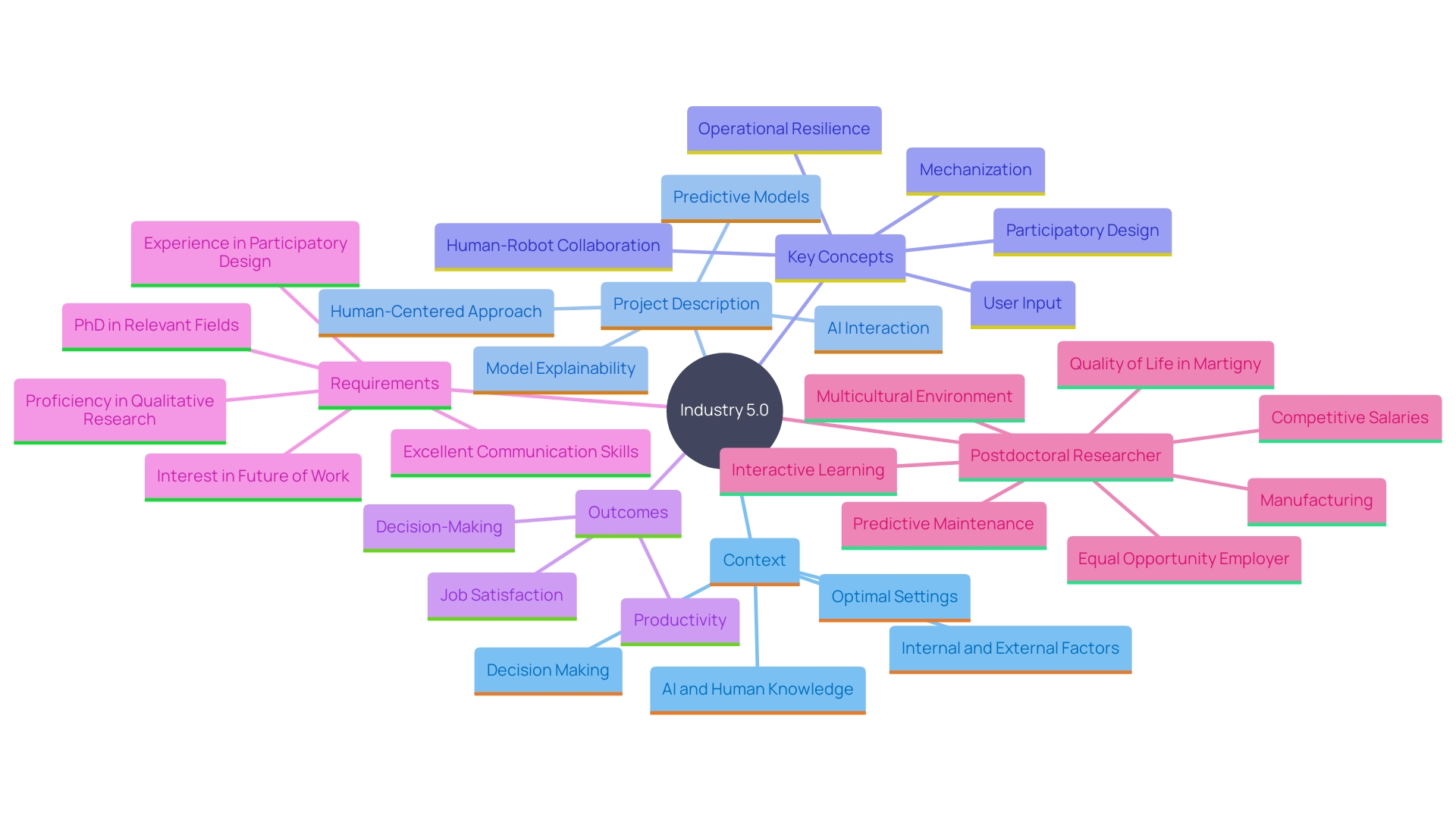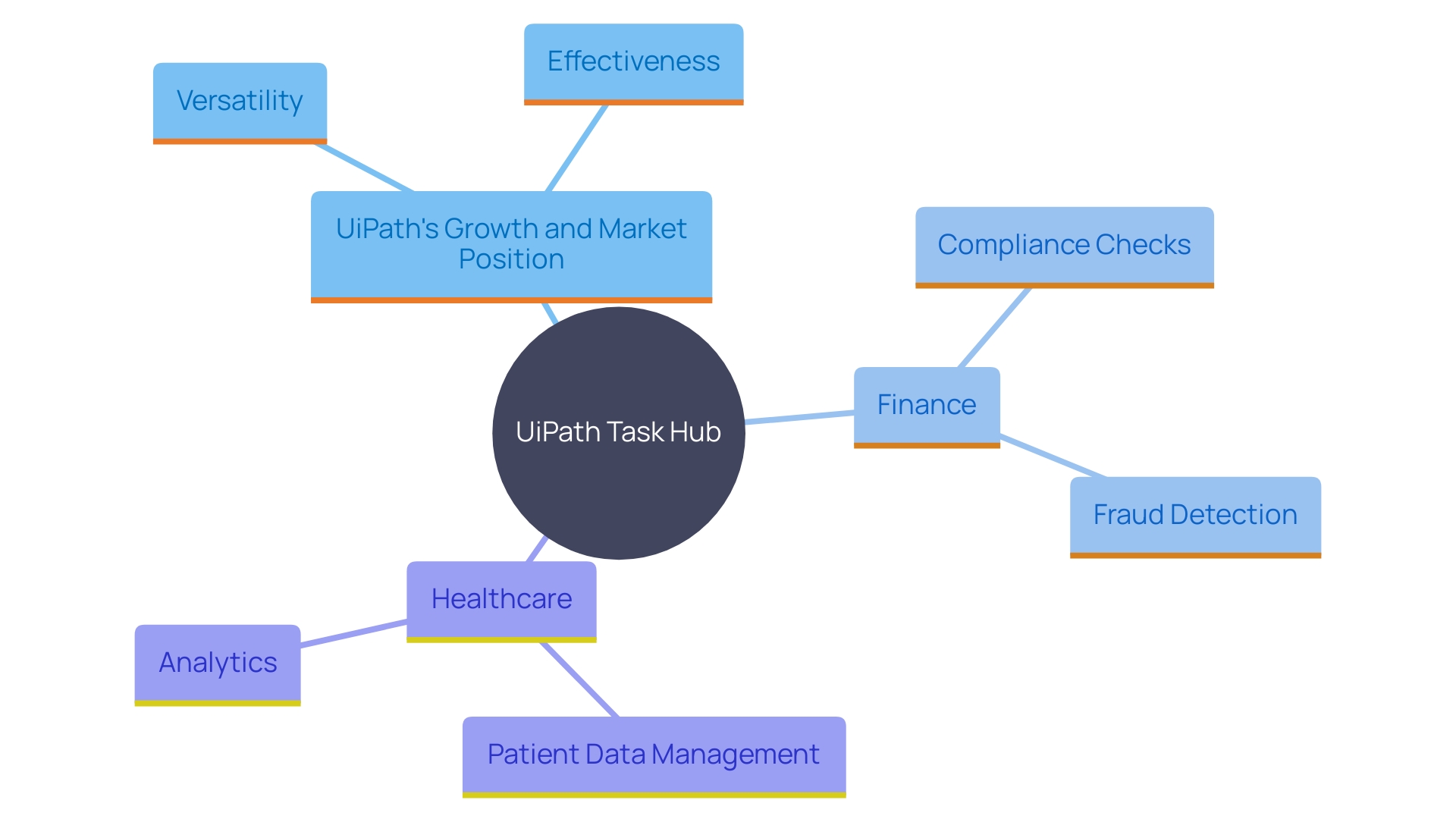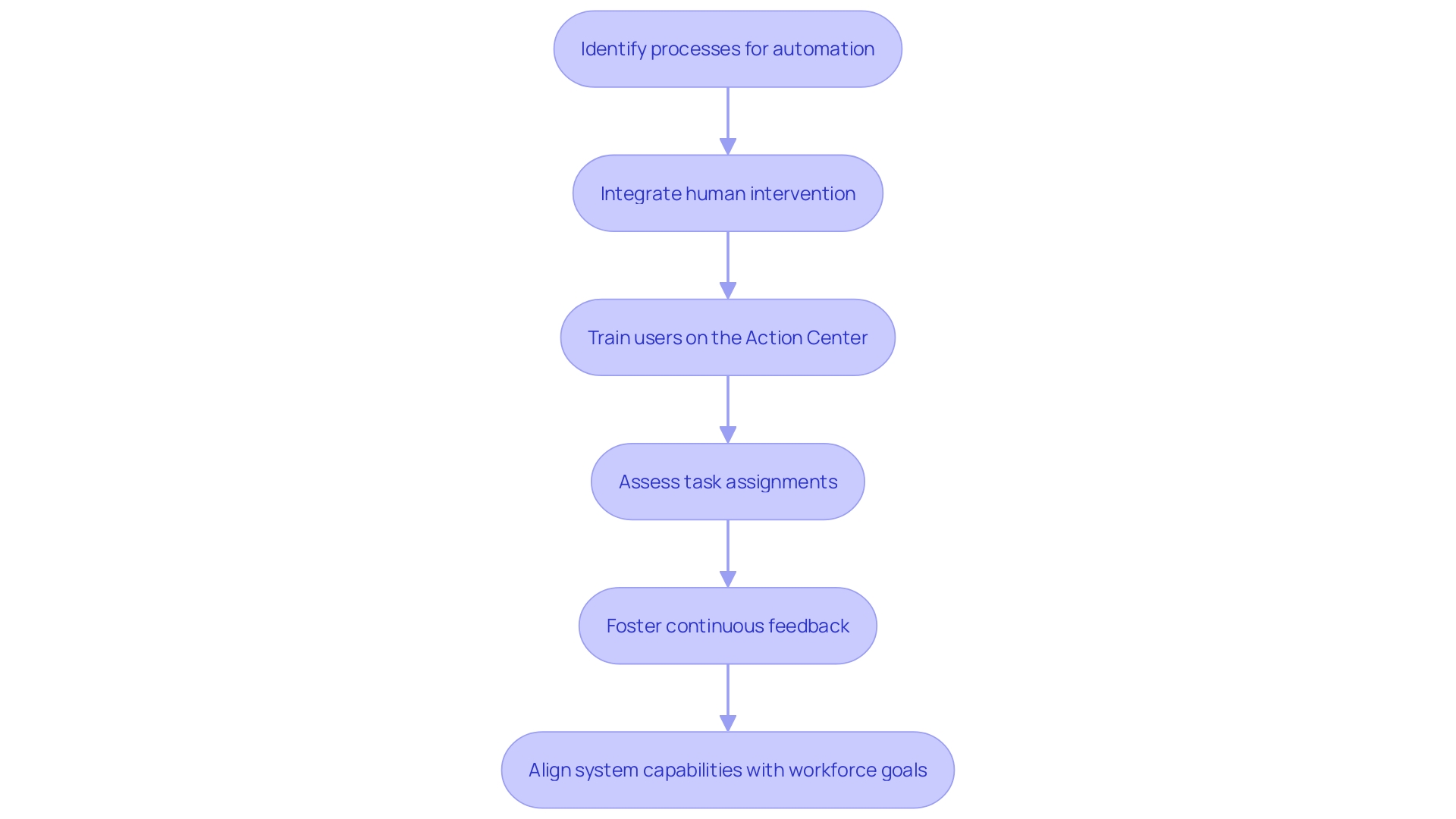Introduction
In an era where operational efficiency is paramount, UiPath Action Center emerges as a critical tool, bridging the gap between automation and human involvement. This article delves into the transformative features of UiPath Action Center, highlighting how it facilitates seamless task delegation and integration with UiPath Orchestrator, thereby enhancing workflow productivity. It also explores the significant benefits of incorporating human-in-the-loop automation, emphasizing improved decision-making and error reduction.
Furthermore, the discussion extends to real-world applications across various industries, showcasing success stories that underline the tool’s versatility and impact. Finally, the article provides best practices for effective implementation, ensuring organizations can fully leverage the capabilities of UiPath Action Center to achieve optimal operational efficiency.
Key Features of UiPath Action Center
UiPath Action Center serves as a crucial connection between automated processes and personal involvement, enhancing operational efficiency through various advanced features. It excels in managing and tracking human-in-the-loop processes, allowing for seamless task delegation to users and smooth integration with UiPath Orchestrator. The interface is designed with user-friendliness in mind, ensuring effortless navigation and prioritization of tasks to guarantee critical operations are addressed promptly. Furthermore, it enhances collaboration between humans and robots by supporting notifications and reminders, ensuring everyone stays informed and aligned. This functionality has experienced greater acceptance, rising from 10% to 56% among professionals, as emphasized in the recent report on technological trends. This report, based on a global survey of 1,639 automation professionals and students, showcases the increasing dependence on tools such as UiPath Workflow Hub to streamline complex processes and enhance productivity.

Benefits of Human in the Loop Automation
Incorporating user input into automated processes through UiPath Action Hub significantly improves operational efficiency by enabling smooth human-robot collaboration. This framework ensures that complex decisions needing personal judgment are made effectively, minimizing errors in automated workflows. According to Armstrong of the MIT Industrial Performance Center, incorporating worker feedback through participatory design practices can greatly enhance the effectiveness of these systems. Such practices not only empower employees but also foster a collaborative environment, leading to improved job satisfaction and productivity.
Furthermore, adding mechanization does not imply removing personnel positions. As noted by SS&C Blue Prism, mechanization enhances the workforce by managing repetitive, high-volume tasks, allowing employees to concentrate on value-added activities. This approach aligns with the principles of Industry 5.0, where the goal is to increase productivity without eliminating workers from the equation.
Furthermore, organizations can expand their mechanization efforts while upholding quality control. The digital workforce can flexibly adapt to varying work demands, ensuring that essential oversight is available where needed. This adaptability is crucial for maintaining operational resilience and efficiency, especially in the face of market turbulence and resource availability challenges.
Lastly, a global survey of 1,639 professionals in the field revealed that there is a growing openness to integrating AI into working activities, further supporting the trend towards intelligent processes. By utilizing cognitive automation systems that replicate intelligence, organizations can improve their decision-making processes and operational efficiency.

Real-World Applications and Success Stories
UiPath Task Hub has shown its capability to enhance operations across different sectors. In the finance sector, it has significantly enhanced compliance checks by allowing human reviewers to validate automated reports, thereby reducing fraudulent activities and boosting customer trust. This mirrors the success seen by a leading financial institution that employed advanced fraud detection algorithms, resulting in a notable reduction in fraudulent activities.
Healthcare has also gained advantages from UiPath’s operational hub, particularly in patient data management. Medical staff can review and approve actions taken by bots, ensuring data accuracy and seamless operations. For instance, a rural hospital underwent a relaunch of its analytic processes as part of an organizational quality project. This initiative aimed to harness the power of analytics, making it easier for leadership to gauge progress and make informed decisions, ultimately improving patient outcomes.
Moreover, UiPath’s robust growth and adoption underline its effectiveness. The company reported a 24% year-on-year revenue increase this quarter, signaling a strong market position and the growing reliance on its automation solutions. These success stories highlight the versatility and effectiveness of UiPath’s platform in tackling industry-specific challenges, establishing it as an essential resource for operational efficiency.

Best Practices for Action Center Implementation
To unlock the full potential of UiPath Task Hub, organizations should adhere to several best practices. Begin by meticulously identifying processes that necessitate human intervention and seamlessly integrating them into your automation workflows. Providing comprehensive training for users is crucial to ensure they are adept at navigating the Action Center interface and utilizing its functionalities effectively. Regularly assess and fine-tune task assignments based on performance metrics to maintain a balanced and efficient workload distribution. Additionally, fostering a culture of continuous feedback from users can lead to ongoing system improvements, directly addressing their evolving needs and enhancing overall productivity. By aligning the system’s capabilities with the specific tasks and goals of your workforce, you can significantly increase operational efficiency and effectiveness.

Conclusion
UiPath Action Center is essential for enhancing operational efficiency by effectively bridging automation and human involvement. With features like seamless task delegation and integration with UiPath Orchestrator, it enables organizations to manage human-in-the-loop processes efficiently. The intuitive interface ensures that critical tasks receive prompt attention, while its increasing adoption highlights its importance in streamlining complex workflows.
Incorporating human input into automation through UiPath Action Center reduces errors and enhances decision-making. This approach allows employees to focus on higher-value tasks, fostering job satisfaction and aligning with Industry 5.0 principles. The flexibility of the digital workforce ensures quality control and operational resilience, especially in dynamic market conditions.
Real-world applications in industries such as finance and healthcare demonstrate the tool’s versatility. Success stories reveal its effectiveness in improving compliance and data management, underscoring its significant impact on operational efficiency.
To fully leverage UiPath Action Center, organizations should adopt best practices, including integrating human intervention into workflows, offering comprehensive user training, and encouraging continuous feedback. By aligning the system’s capabilities with workforce needs, organizations can achieve optimal operational efficiency and position themselves for success in an increasingly automated landscape.

